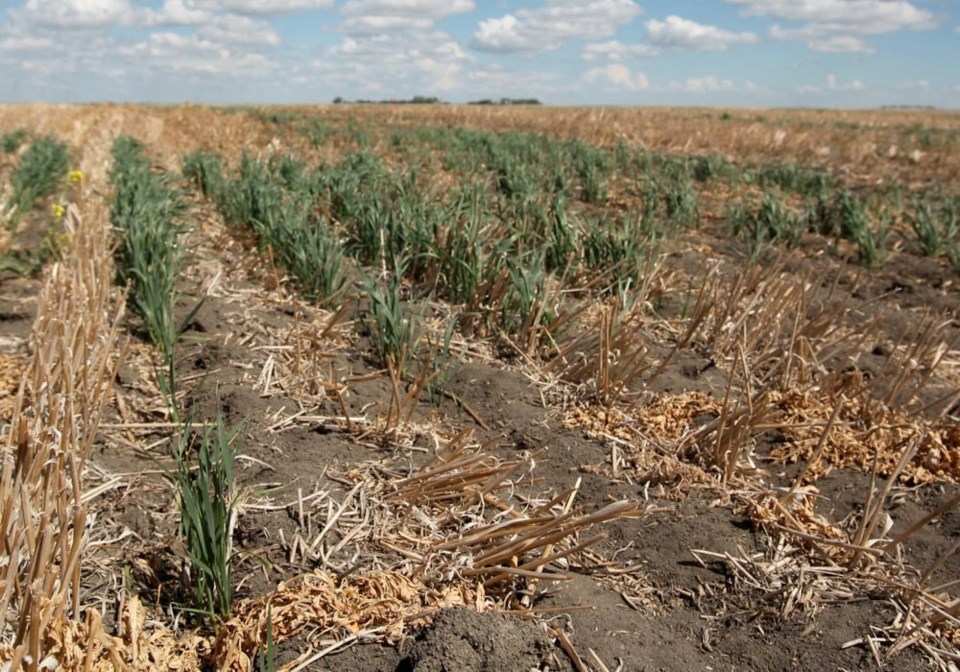WESTERN PRODUCER — Spring rains were scarce in many parts of the Prairies, and crops will need more soon to spur crop growth.
Phillip Harder, research associate at University of Saskatchewan’s Centre for Hydrology, said this year’s spring dry spell has hit many parts of all prairie provinces — from the commonly arid southern parts of Alberta and Saskatchewan to the usually damp Manitoba.
He said it’s now down to whether timely rains will fall in time for crop roots to grow deep.
“There is residual moisture there,” said Harder. “It was a late year. Late snowmelt so moisture went in late. Things weren’t that long relatively between end of snow and planting but we didn’t have rain in those times and we had this excessive heat.”
That heat has led to soil evaporation and an inability for germinated plants to access soil moisture reserves.
“That’s what we are dealing with,” said Harder. “The places that had timely rains, they have roots that can actually reach (moisture). There is residual moisture there but it’s just unavailable to crops at the moment.”
Even if recent rains provide relief for crops, Harder said, “we have damage locked in already. We are going to be taking a yield hit in some areas already.”
He said the conditions are extremely variable across the Prairies. This includes extreme drought in parts of Alberta to a wetter than usual spring for parts of central Saskatchewan.
As for Manitoba, “it’s a bit of a sleeper in terms of water issues at the moment. Nobody is really talking about that quite as much but they’re in a fairly low-precip, low-snowfall year. They had good moisture going into the winter in contrast to some of the other places but it’s a mixed bag across the Prairies,” said Harder.
Manitoba often deals with standing pools of water in the spring and farmers worry about compaction issues this time of year.
“It doesn’t seem as acute right now because there was existing moisture from last year being so wet. But Manitoba has had extremes,” said Harder. The province went from drought in 2021 to a wet 2022 and now back to dry conditions.
Even for southern Alberta, where wild fluctuations of extreme dry and wet springs are historically common, Harder said the early extremely hot spring temperatures are unusual.
“That can make a dry year a terrible year,” he said.
Leading into mid-June, much of the precipitation has been from thunderstorms that can drench one field but leave a neighbouring crop dry.
“You look at the maps and they look pretty bad in Alberta and then see parts of Saskatchewan being not so bad. But that’s not really reflective of the variability out there,” said Harder.
If that localized rain hits a weather station, it might reflect better conditions than are occurring throughout a region, he said.
“We look at the maps and see the general patterns but within that there is a huge amount of variability,” he said. “I don’t think we have a good appreciation as to how dire some places are.”
That’s been the case for much of Saskatchewan with two-thirds of the province reporting adequate cropland topsoil moisture levels as adequate and nearly a third reporting depleted levels.




